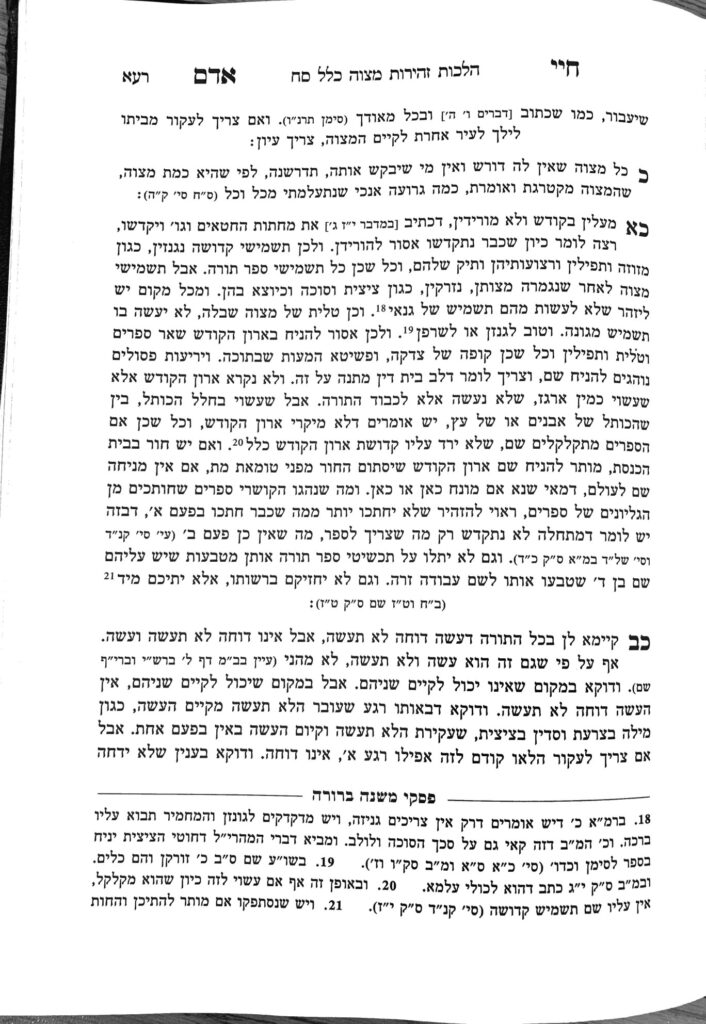We are continuing in siman 21, regarding the concept of ma’alin bakodesh. This concept has wide-ranging implications. Today, we will discuss some of these examples.
Tefillin shel rosh are considered more kadosh than tefillin shel yad, because they have a letter of Hashem’s name etched directly into them. If one has a tefillin shel yad that they wish to convert into a shel rosh, they may do so (assuming they can create the necessary compartments inside of it), but they cannot convert a shel rosh into a shel yad, because ein moridin.
Similarly, we put on the tallis before tefillin, because the tefillin have a higher kedusha than the tallis
The Gemara tells us that if a kohen gadol is unable to perform the avodah, there is a reserve kohen gadol who steps in to take over. When the first kohen gadol is available to return to his original position, the second kohen gadol can no longer work at all. He does not serve as a kohen gadol, because we do not want to cause rivalry between the two kohanim gedolim. He also cannot return to serve as a regular kohen, because of this concept of ma’alin bakodesh. A regular kohen wears four begadim, and the kohen gadol wears eight, so the kohen gadol returning to be a regular kohen would be a problem of ein moridin.
We also see that ma’alin bakodesh applies to how a mitzvah item is treated. When the lechem hapanim was first brought into the beis hamikdash at the beginning of the week, it was placed on a table of marble or silver. It would then be placed on the shulchan, which was made of gold, and would remain there for the duration of the week. When it was time to remove that week’s lechem hapanim and divide it amongst the kohanim, it was placed on a table of gold. Once it had been placed on the shulchan, which was made of gold, it would have been a problem of ein moridin to place it on a table made of anything less than gold. Even though the final table was just a holding table, as a way to divide it amongst the kohanim, the issur of ein moridin still applied
Another example of maalin bakodesh regards the kerashim (beams) which formed the wall of the mishkan. When the mishkan was taken apart and rebuilt, the kerashim closer to the kodesh hakodashim could not be placed further away from the kodesh hakodashim, because once they were in closer proximity to kedusha, it would be a problem of ein moridin to place them further away. Based on this halacha, some are makpid to ensure that the tzitzis which are zoche to be in the front of a beged are always placed in the front, and do not get switched with the ones in the back. One of the reasons a tallis has something on it to indicate which side is the top and which side is the bottom (often known as the atarah) is to help indicate which tzitzis are in the front and which are in the back.
Summary
The concept of ma’alin bakodesh v’ein moridin has many applications. For example:
- Changing a tefillin shel rosh to a tefillin shel yad;
- Putting on tallis before tefillin;
- A reserve kohen gadol returning to serve as a regular kohen;
- Proper treatment of the lechem hapanim;
- The proper placement of the kerashim in the mishkan.
- Always placing the front facing tzitzis in front



